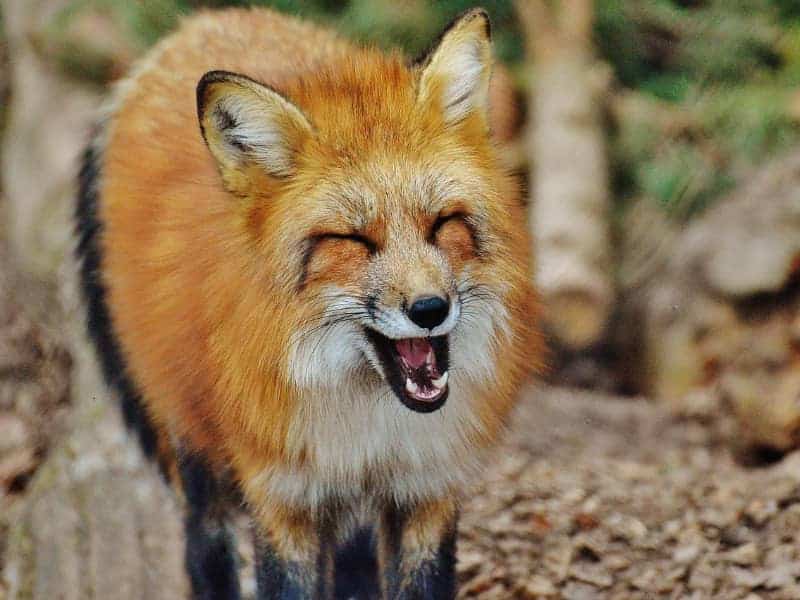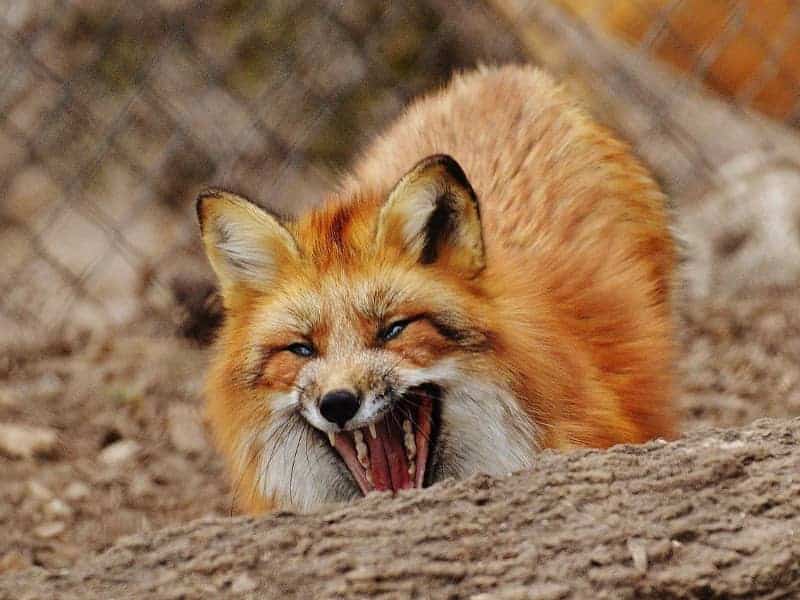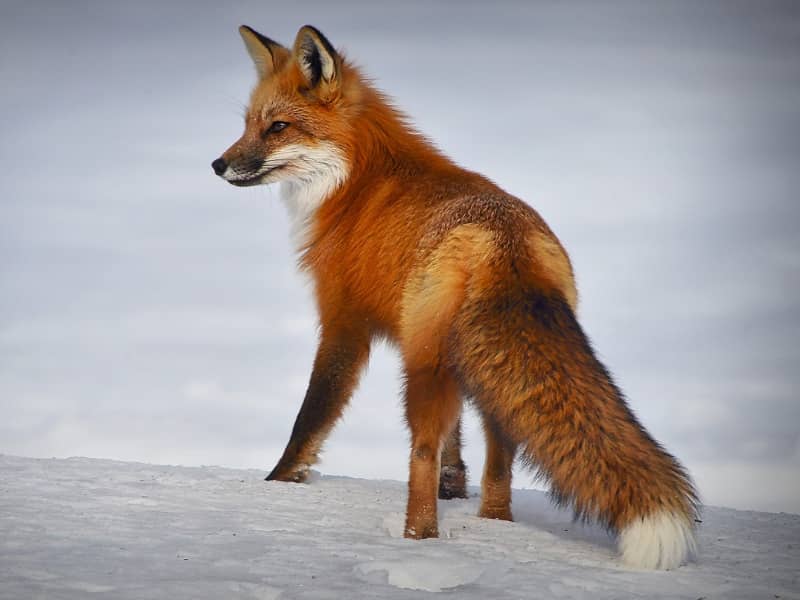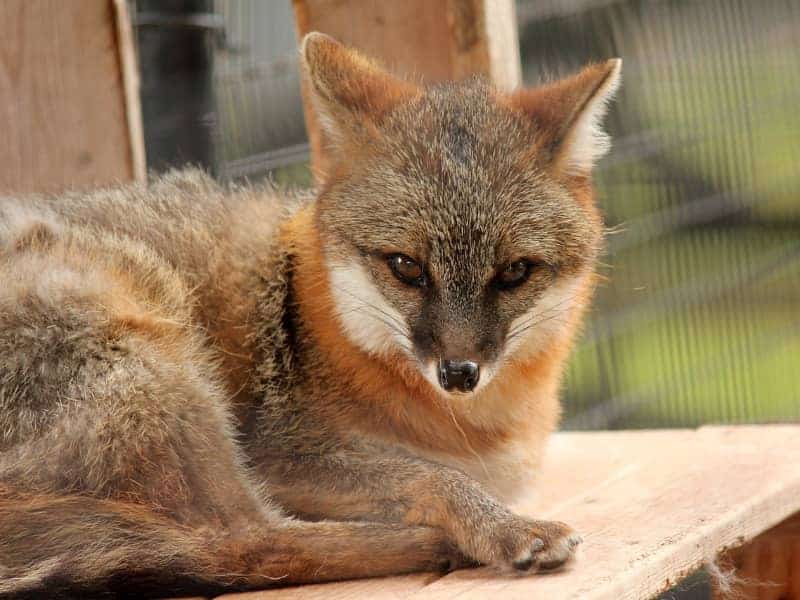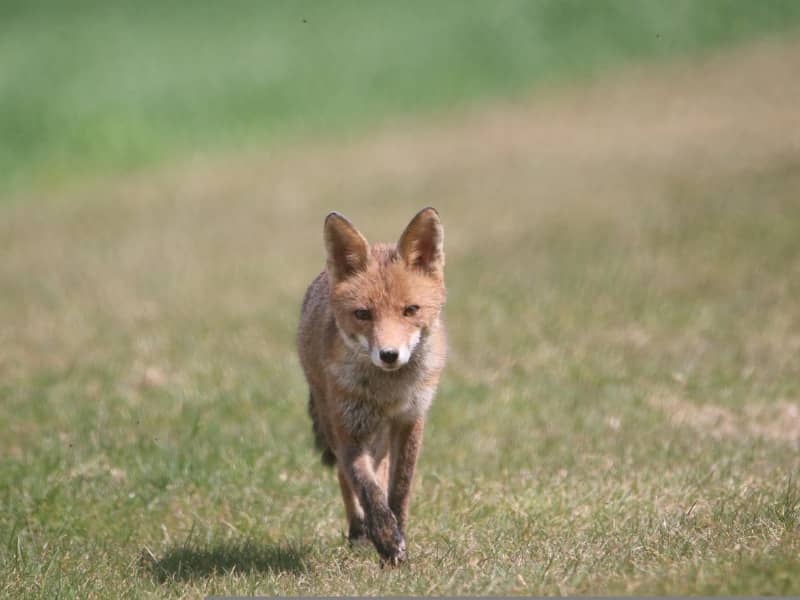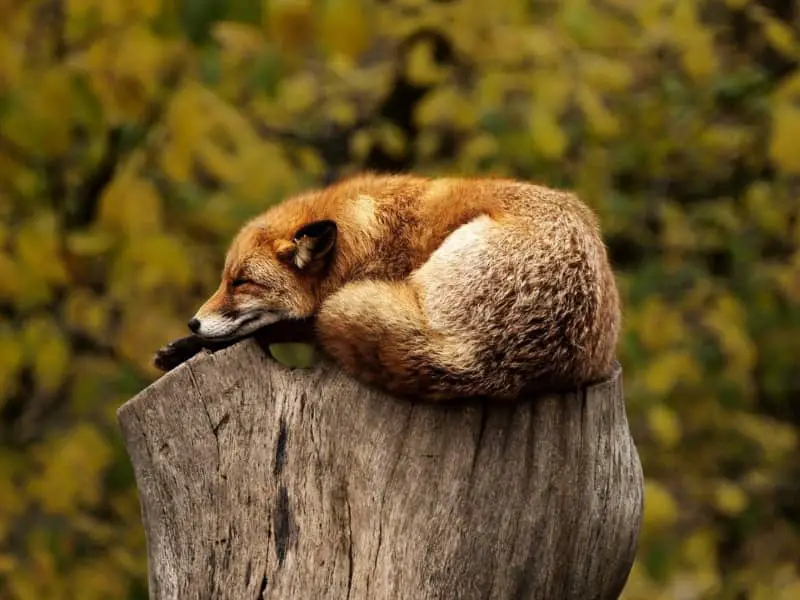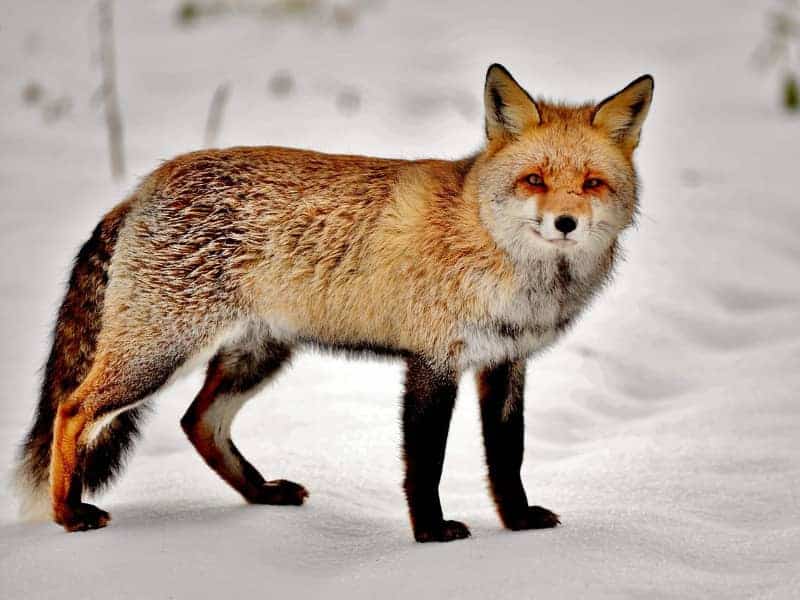
Fox in winter
The fox is one of the most active wild animals in Germany in winter. This has different reasons, which we will discuss here. You will discover new sides of the fox and get to know and understand things that you may already be familiar with.
The fox does not hibernate
Even though this story is told over and over again, it is definitely the case that the fox does not hibernate. He does not have the prerequisites for this, as other animals have. It is therefore not possible for it to accumulate a special large layer of fat, which would ensure the energy supply in such a sleep. Likewise, he can not shut down his vital functions, as other animals do.
These are all things that would be a prerequisite for the fox to hibernate. It doesn't and has adapted excellently to the cold season in the course of evolution. We will now go into more detail about which prerequisites these are.
Fox in winter - the winter coat
In every fox species, a complete and full coat change takes place twice a year. Already in October, the undercoat in the fur begins to become denser and forms the so-called winter coat. In this winter coat, the upper hairs, called topcoats, also become significantly thicker and longer. These topcoats retain their reddish hue, whereas the undercoat is usually a dark gray tone.
This fine and dense undercoat ensures that the foxes do not freeze in the winter, so they can easily endure the cold. With the legs, nature has come up with something clever. Thus, the fur there is much shorter and thus less snow and dirt sticks to the hair in this area. Thus, the legs remain free of snow clumps and the foxes can move well.
In April then begins the change of coat to the summer coat. This change of coat goes on for several months and is only completely finished in the months August/September. Already two months later begins the renewed change to the winter coat.
The coat color in winter
As we have already mentioned above, the coat color changes with the coat change in the fox. In summer, the coat usually has a strong reddish-brown hue and the underside as on the belly and legs turns into a dark gray. Because of these color tones can Fox very well in a dark vegetation to wait there for its prey.
In winter, he gets a much lighter coat and the body is only slightly reddish and the colors shift to a shade of red with gray inclusions. Depending on the direction you look at the fox's coat, this hue changes and can appear completely gray. This coloring helps the fox sneak through the landscape undetected in the winter and go in search of food.
The foxtail in winter
The fur on the tail of the fox is thick and dense in the winter months. When the fox curls up, it can cover itself with it, keeping its body warm. In very low temperatures, the fox's tail is also placed over its nose. This allows the fox to breathe slightly pre-warmed air and requires less energy than if it had to breathe cold air.
Fox in winter - body fat as a heat accumulator
In autumn, the fox begins to accumulate a layer of fat. He goes hunting significantly more so that he can find more food to build up this fat layer. The fat layer performs two tasks for the fox in winter. First, as a food reserve to bridge periods with little prey and so he can easily go several days without food in extreme weather.
However, the more important function is the heat storage function of this fat layer. Combined with its dense and warmth-giving winter coat, this layer functions as a second heat accumulator next to the fur. This efficiently prevents the body from cooling down too quickly and using up too many energy reserves to keep the body warm.
How does the fox spend its time in winter?
Most of the time, and much more than in the warm season, the fox spends finding enough food. On the one hand, it lies in wait for small animals such as birds, but it also likes to raid garbage cans and compost heaps near people to satisfy its hunger. Here the fox is not picky and is a real omnivore.
December to February is mating season for foxes. These matings involve many rituals and can sometimes take days to successfully complete. The male animal must find a willing female fox that suits him. Once he has found her, he must show her that he is the right one and at the same time drive away annoying competitors.
This is the reason why, especially in winter, the Fox with his sounds can be heard. The sounds are very diverse and range from a simple bright bark to a scream. These sounds are heard especially at night, as this is the most active time of the animals.
Where does the fox sleep in winter?
Of course, the fox also need to sleep regularly in the winter. It is often assumed that the fox has a den in which it can crawl away to sleep and rest. However, this is only partially true during the mating season and when raising the young is not necessary for most foxes cave also in cold weather, the animals usually simply sleep on the ground.
When winter has set in and there is a closed blanket of snow, you may discover a fox in the middle of the snow. It lies curled up in the snow like a ball with its tail wrapped around itself and sleeps. The animal is then usually not injured, but it has simply lain down to sleep.
Should the temperatures be so low that sleeping in the open field is no longer possible, then the foxes dig dens in the snow. These burrows provide some insulation and function much like an igloo. The interior temperature is higher because fox body heat radiates and does not escape to the outside. Cubs are also brought into such dens during extreme weather.
We can the small foxes, which usually do not yet have such large fat reserves the old animals are kept warm much better. At the same time the den serves as protection from enemies that could be dangerous for the young animals.
The heat exchange system at the fox in winter
The fox does not hibernate and is extremely active in the winter, we have brought this closer to you in the meantime. The animals are excellently protected against the cold by their dense winter fur and the layer of fat. But what about the legs? The short hairs there, do not really protect the fox from the cold. So how does the animal manage to walk through the snow for a long time in search of food without its paws freezing and causing damage?
In the course of evolution, foxes have created a mechanism in your legs that experts call the countercurrent heat exchange mechanism. This works as follows:
The arteries are responsible for the transport of oxygen-rich blood, these lie exceptionally close to the veins. This close proximity creates a natural temperature regulation. The warm blood that comes from the heart and flows in the arteries warms the cold blood in the veins that flows back to the heart. This ensures that the paws of the fox are as cold as the ground in winter.
The blood of the arteries thus cools on the way to the paws and gives off less heat to the environment. This is the reason why the paws are insensitive to the cold despite the poor insulation. This warming system ensures that the arctic fox can withstand temperatures as low as -30° without any problems and can also be found in other animals. These include seals, ducks and penguins.
Fox in winter, what does he eat?
The fox adapts its menu to the season. One of his favorite meals is meat. He hunts small animals like rabbits, squirrels, mice and birds. Insects are also on his menu, as well as fruit and cereals. The fox is basically an omnivore and, when hungry, is not choosy about what it eats.
If it has a large food supply, then it specifically wants to select the treats and also hides some of them. For this purpose, a shallow hole is dug in the ground and the supplies are placed inside. After that, the hole is closed with leaves and earth and can thus fall back on these reserves in case of food shortage.
In winter, mice and birds are its main food source. In front of mouse holes, it sometimes lies in wait for hours to kill a mouse as it leaves. If the food supply is scarce, then the foxes go to residential areas to search for food. On this occasion also dead animals recorded who were killed by vehicles or died due to other circumstances.
This is easy prey for the fox, as it does not have to hunt for it. Occasionally, foxes are also spotted at bird feeders during the winter months. There they lie in wait and try to make prey while the birds are eating. Therefore, bird feeders should always be elevated so that the birds are safe.
If you discover a fox in a residential area that is looking for food, please never offer this animal food. It will find enough opportunities to provide itself with food without your help. A fox in winter definitely does not need any assistance from us humans and would only make it dependent.
Author

-
Garden animal - A life with nature
Welcome to my animal blog! My name is Dirk and I am happy to take you on my journey through the fascinating world of animals and gardening.
Born 54 years ago, I have had an insatiable curiosity for the animal world around me since childhood. Although I have moved professionally in other industries, my true passion has always been animals and nature. It is remarkable how a small garden has become such an important part of my life.
Many of my fondest memories are associated with the animals that share our home. Whether it's the curious squirrels that scurry across the trees in the morning, the colorful variety of birds that visit our feeders, or the busy bees and butterflies that pollinate our flowers, every moment with them is invaluable to me.
This blog is my contribution to share my experiences, discoveries and insights with like-minded people. Here I will share stories of unforgettable encounters with animals, give tips on gardening and creating wildlife-friendly habitats, and take you on my journeys through nature.
Thank you so much for being here!
Cordial,
Dirk aka garden animal
Last posts
- 27. February 2024PetsVeganes Hundefutter – Grün und Gesund?
- 18. January 2024ChickensOregano für Hühner
- November 27, 2023HamsterDiurnal hamsters
- November 24, 2023HamsterHamster hammock

